Tiger-Sul Tech Bulletins provide detailed technical information about the benefits and uses of Tiger-Sul Products in a variety of crops.
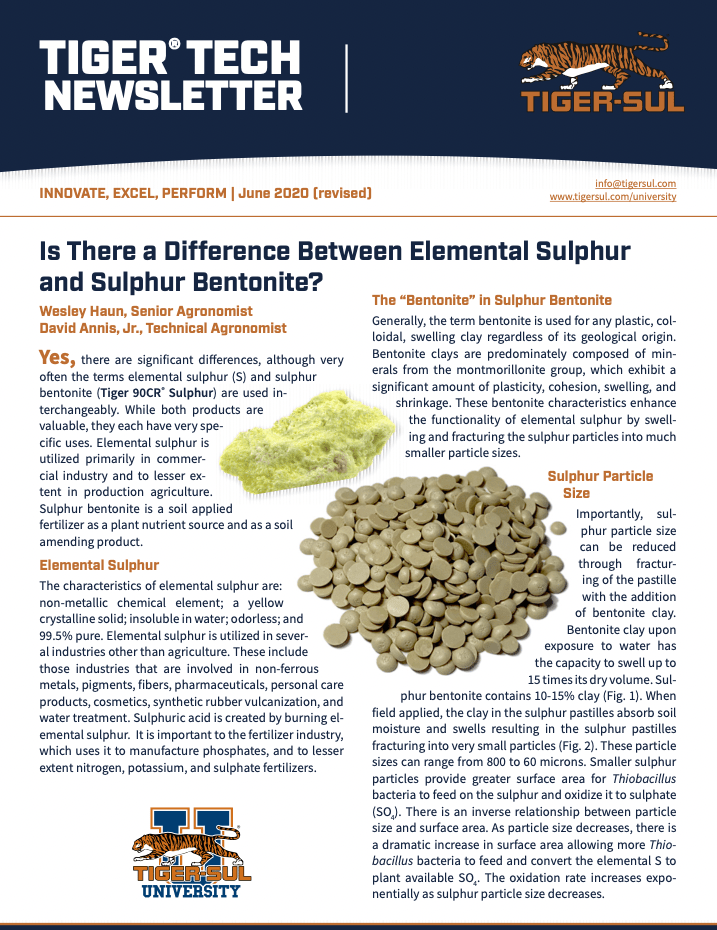
Yes, there are significant differences, although very often the terms elemental sulphur (S) and sulphur bentonite (Tiger 90CR® Sulphur) are used interchangeably. While both products are valuable, they each have very specific uses. Elemental sulphur is utilized primarily in commercial industry and to lesser extent in production agriculture. Sulphur bentonite is a soil applied fertilizer as a plant nutrient source and as a soil amending product.
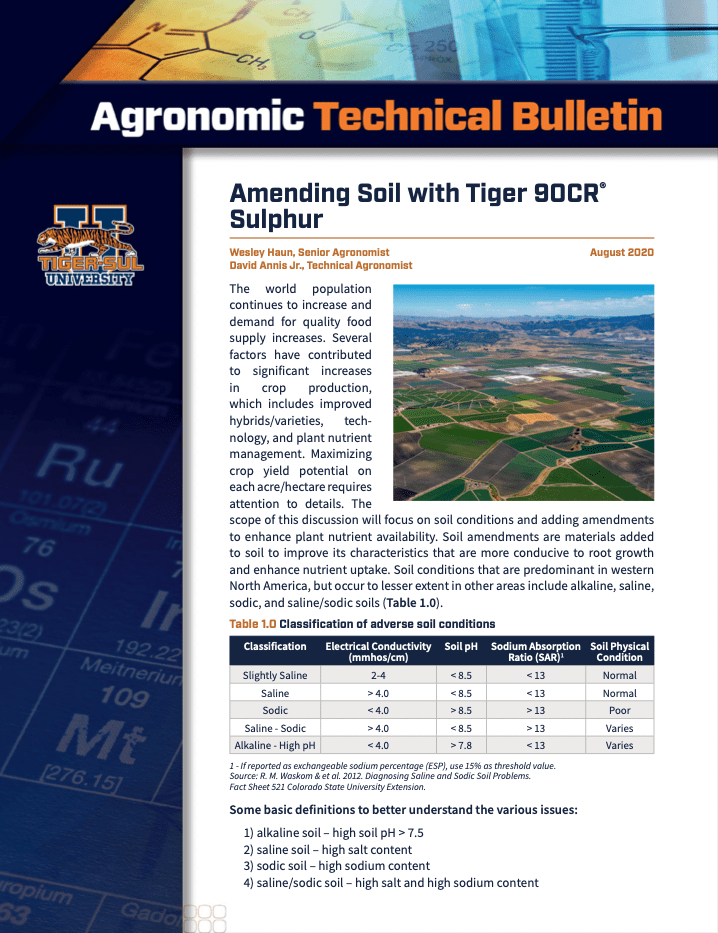
The world population continues to increase and demand for quality food supply increases. Several factors have contributed to significant increases in crop production, which includes improved hybrids/varieties, technology, and plant nutrient management. Maximizing crop yield potential on each acre/hectare requires attention to details.
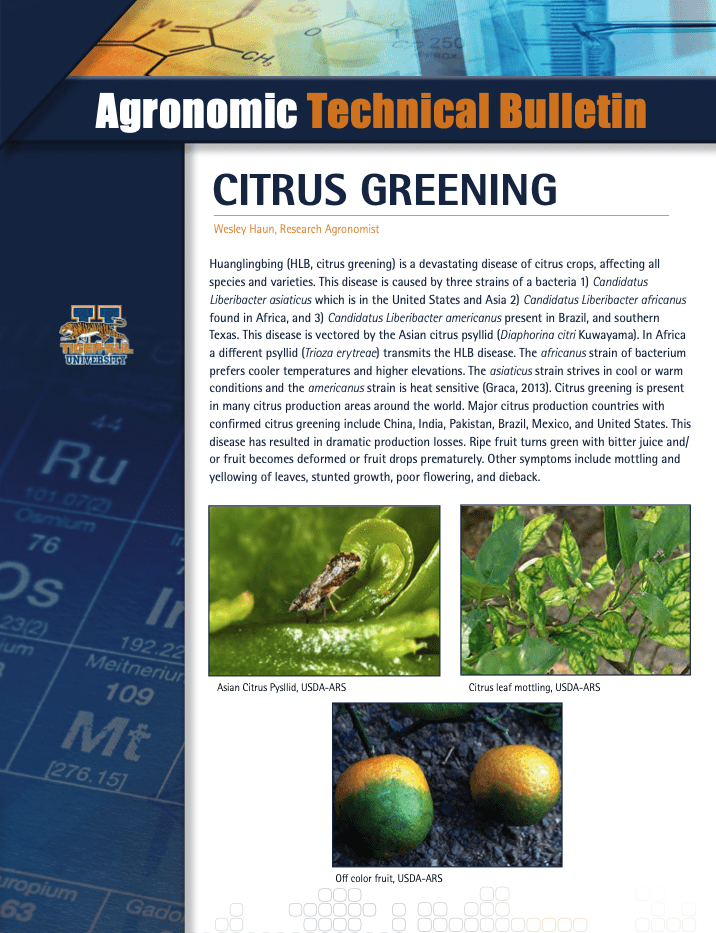
Huanglingbing (HLB, citrus greening) is a devastating disease of citrus crops, affecting all species and varieties. This disease is caused by three strains of a bacteria 1) Candidatus Liberibacter asiaticus which is in the United States and Asia 2) Candidatus Liberibacter africanus found in Africa, and 3) Candidatus Liberibacter americanus present in Brazil, and southern Texas. This disease is vectored by the Asian citrus psyllid (Diaphorina citri Kuwayama).
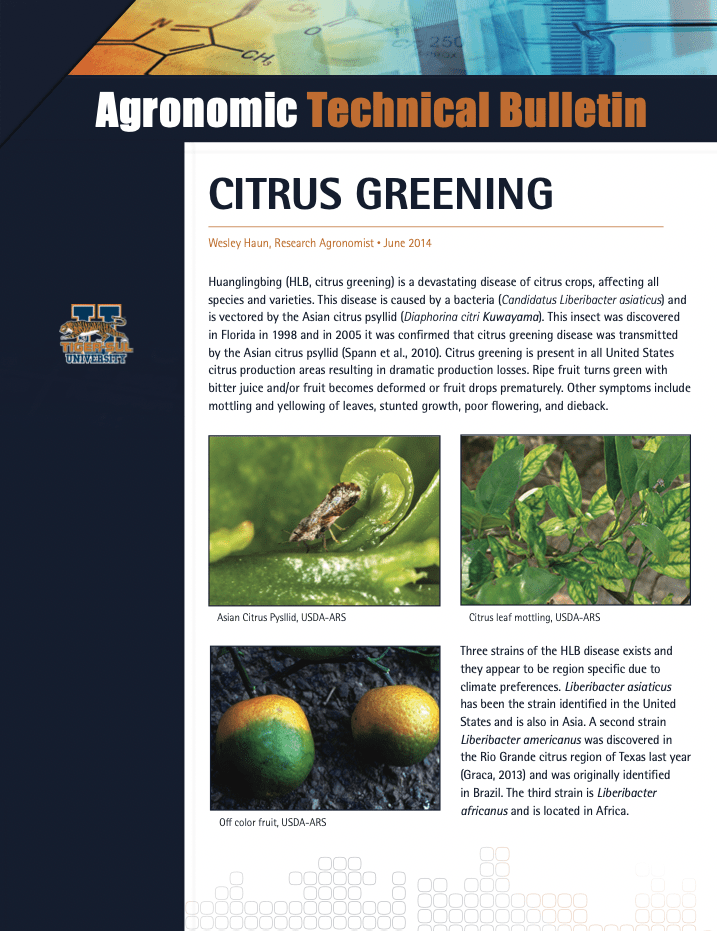
Huanglingbing (HLB, citrus greening) is a devastating disease of citrus crops, affecting all species and varieties. This disease is caused by a bacteria (Candidatus Liberibacter asiaticus) and is vectored by the Asian citrus psyllid (Diaphorina citri Kuwayama). This insect was discovered in Florida in 1998 and in 2005 it was confirmed that citrus greening disease was transmitted by the Asian citrus psyllid (Spann et al., 2010). Citrus greening is present in all United States citrus production areas resulting in dramatic production losses. Ripe fruit turns green with bitter juice and/or fruit becomes deformed or fruit drops prematurely. Other symptoms include mottling and yellowing of leaves, stunted growth, poor flowering, and dieback.
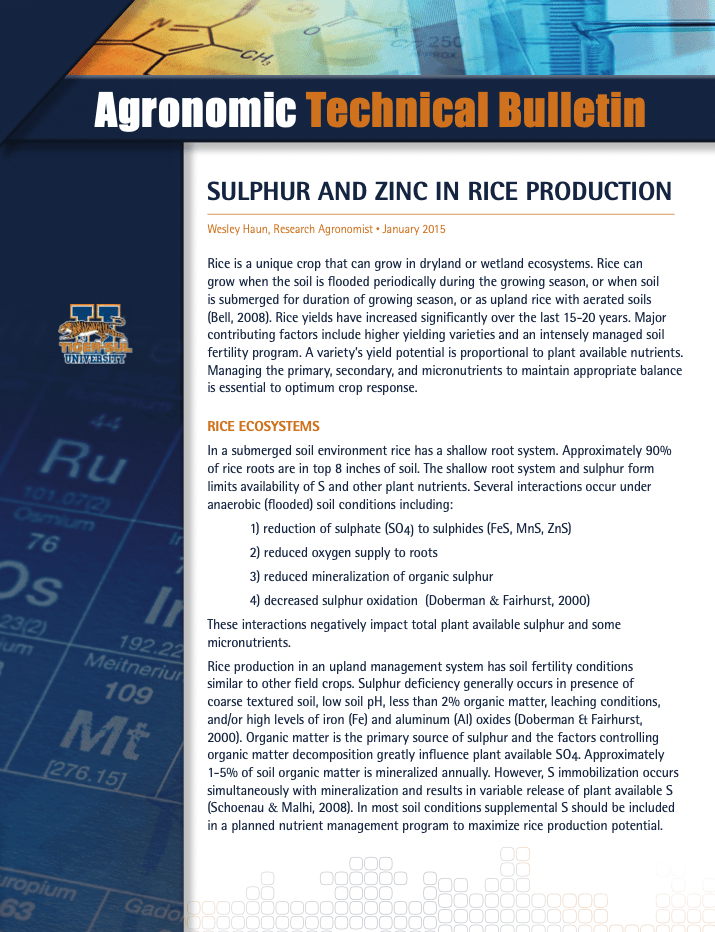
Rice is a unique crop that can grow in dryland or wetland ecosystems. Rice can grow when the soil is flooded periodically during the growing season, or when soil is submerged for duration of growing season, or as upland rice with aerated soils (Bell, 2008). Rice yields have increased significantly over the last 15-20 years. Major contributing factors include higher yielding varieties and an intensely managed soil fertility program.
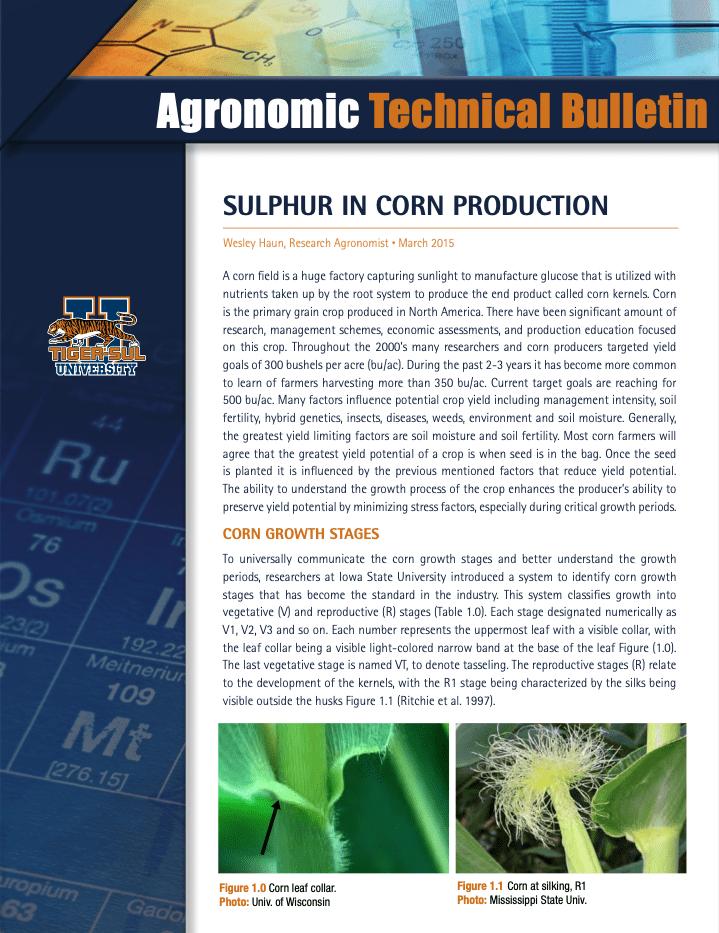
A corn field is a huge factory capturing sunlight to manufacture glucose that is utilized with nutrients taken up by the root system to produce the end product called corn kernels. Corn is the primary grain crop produced in North America. There have been significant amount of research, management schemes, economic assessments, and production education focused on this crop.
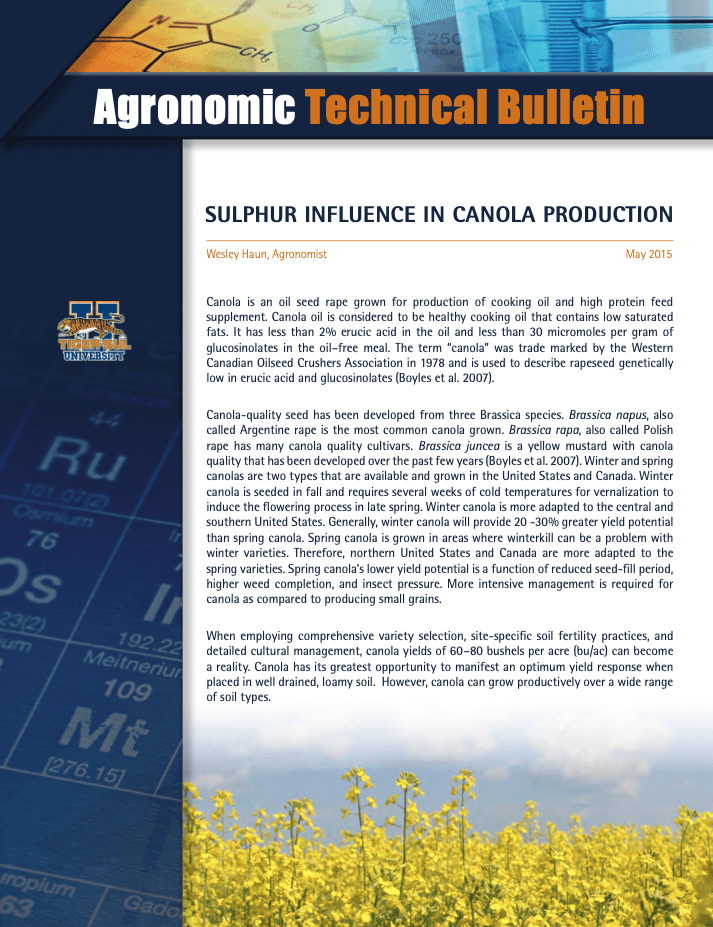
Canola is an oil seed rape grown for production of cooking oil and high protein feed supplement. Canola oil is considered to be healthy cooking oil that contains low saturated fats. It has less than 2% erucic acid in the oil and less than 30 micromoles per gram of glucosinolates in the oil–free meal.
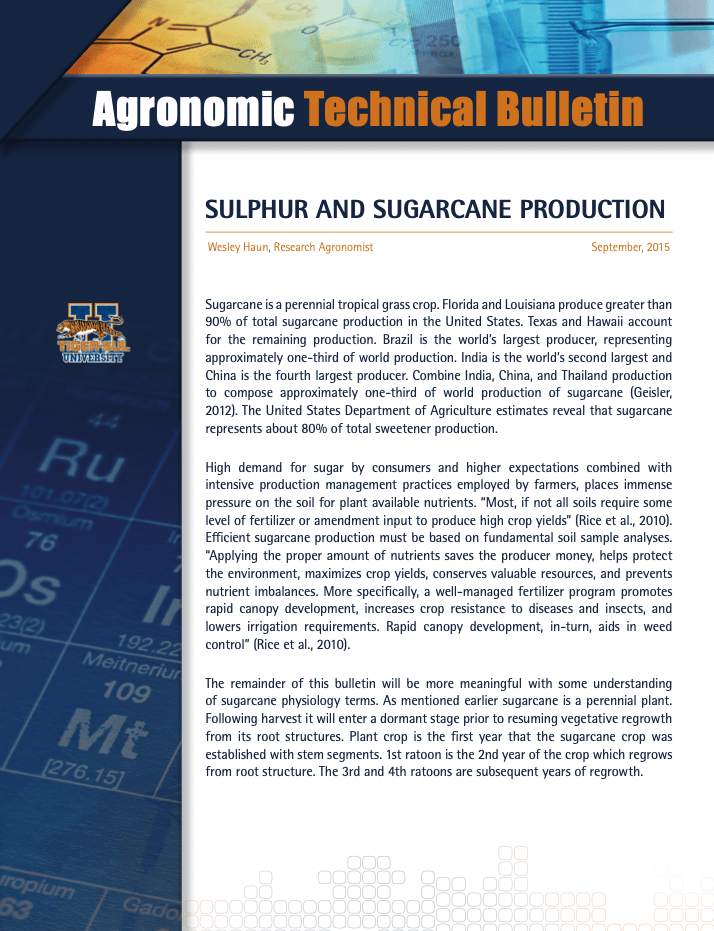
Sugarcane is a perennial tropical grass crop. Florida and Louisiana produce greater than 90% of total sugarcane production in the United States. Texas and Hawaii account for the remaining production. Brazil is the world’s largest producer, representing approximately one-third of world production.
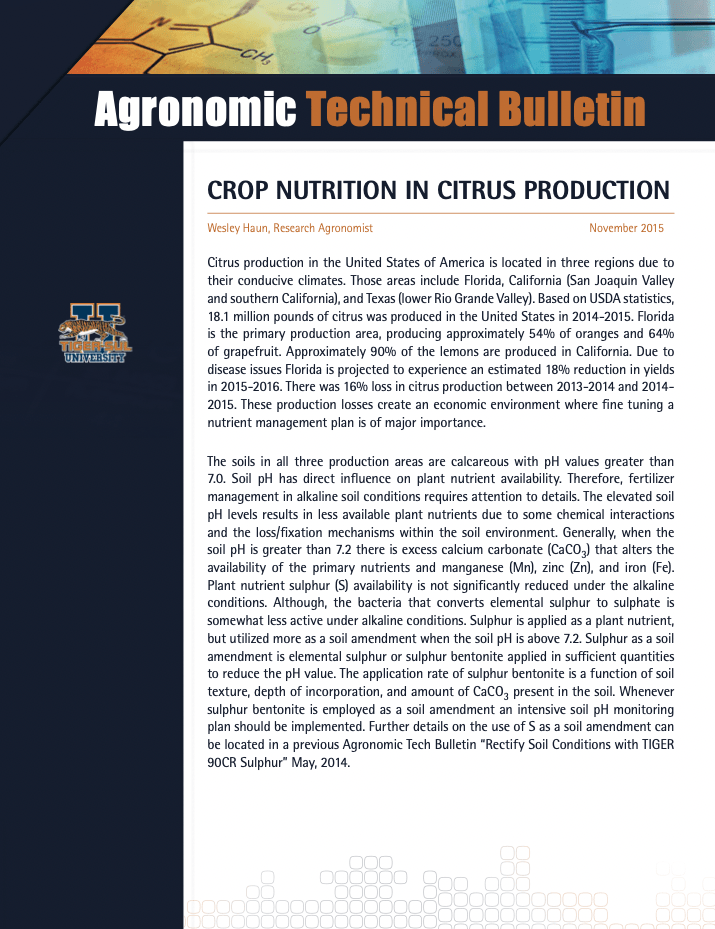
Citrus production in the United States of America is located in three regions due to their conducive climates. Those areas include Florida, California (San Joaquin Valley and southern California), and Texas (lower Rio Grande Valley). Based on USDA statistics, 18.1 million pounds of citrus was produced in the United States in 2014-2015. Florida is the primary production area, producing approximately 54% of oranges and 64% of grapefruit. Approximately 90% of the lemons are produced in California.
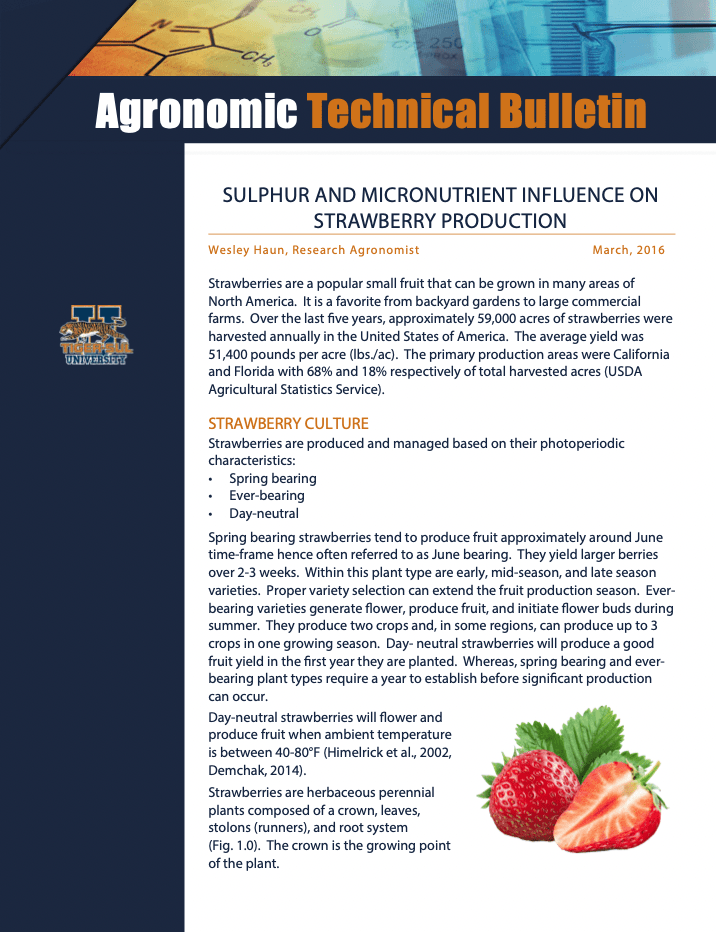
Strawberries are a popular small fruit that can be grown in many areas of North America. It is a favorite from backyard gardens to large commercial farms. Over the last five years, approximately 59,000 acres of strawberries were harvested annually in the United States of America. The average yield was 51,400 pounds per acre (lbs./ac). The primary production areas were California and Florida with 68% and 18% respectively of total harvested acres (USDA Agricultural Statistics Service).
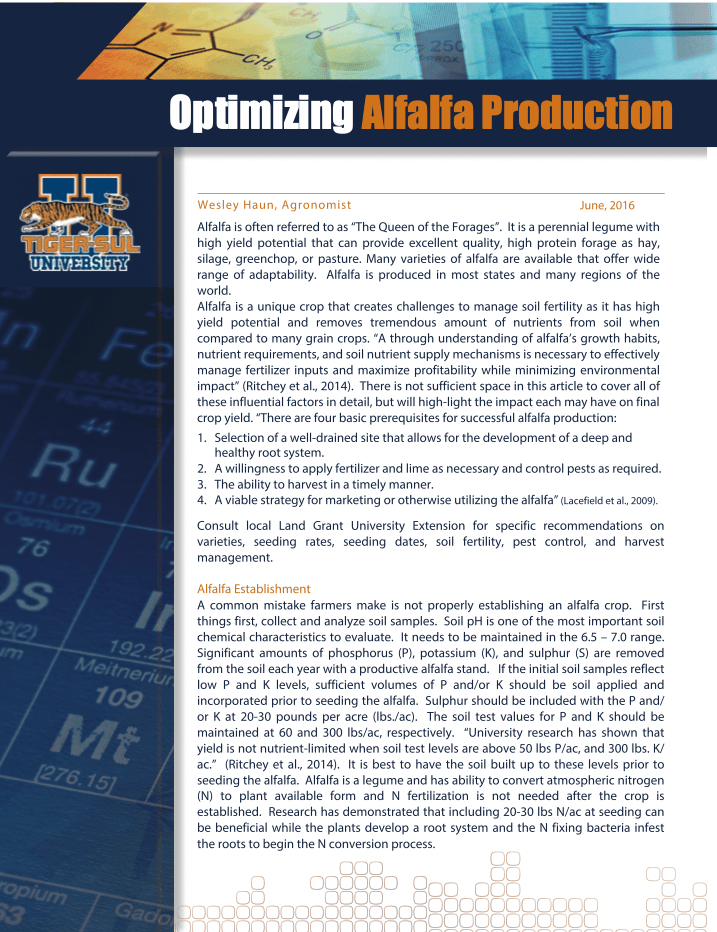
Alfalfa is often referred to as “The Queen of Forages.” It is a perennial legume with high yield potential that can provide excellent quality, high protein forage as hay, silage, greenchop, or pasture. Many varieties of alfalfa are available that offer a wide range of adaptability. Alfalfa is produced in most states and many regions of the world.
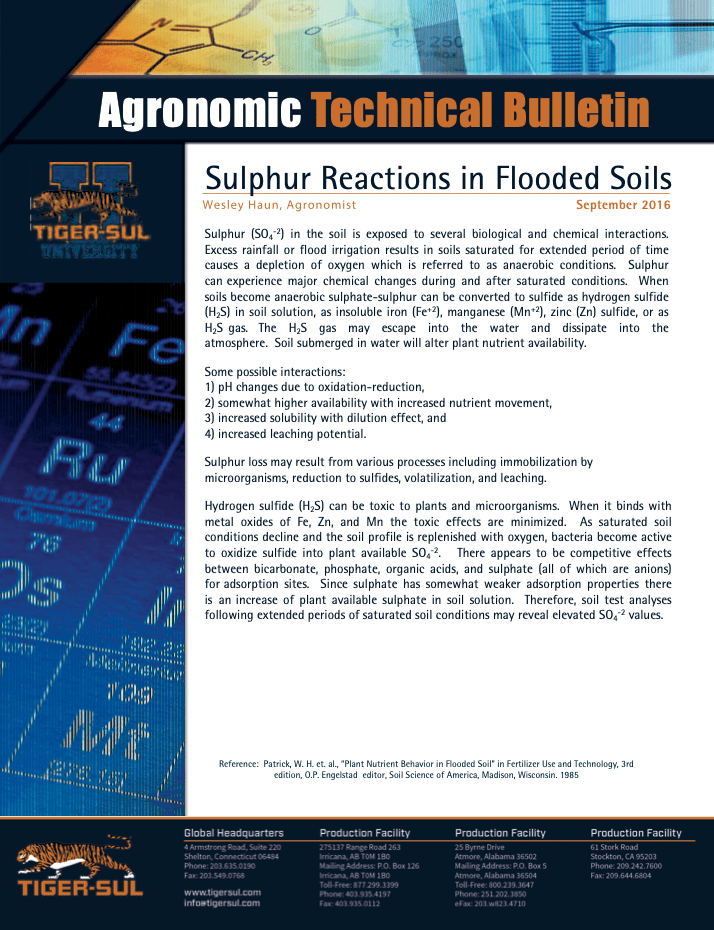
Sulphur (SO4-2) in the soil is exposed to several biological and chemical interactions. Excess rainfall or flood irrigation results in soils saturated for extended period of time causes a depletion of oxygen which is referred to as anaerobic conditions. Sulphur can experience major chemical changes during and after saturated conditions.
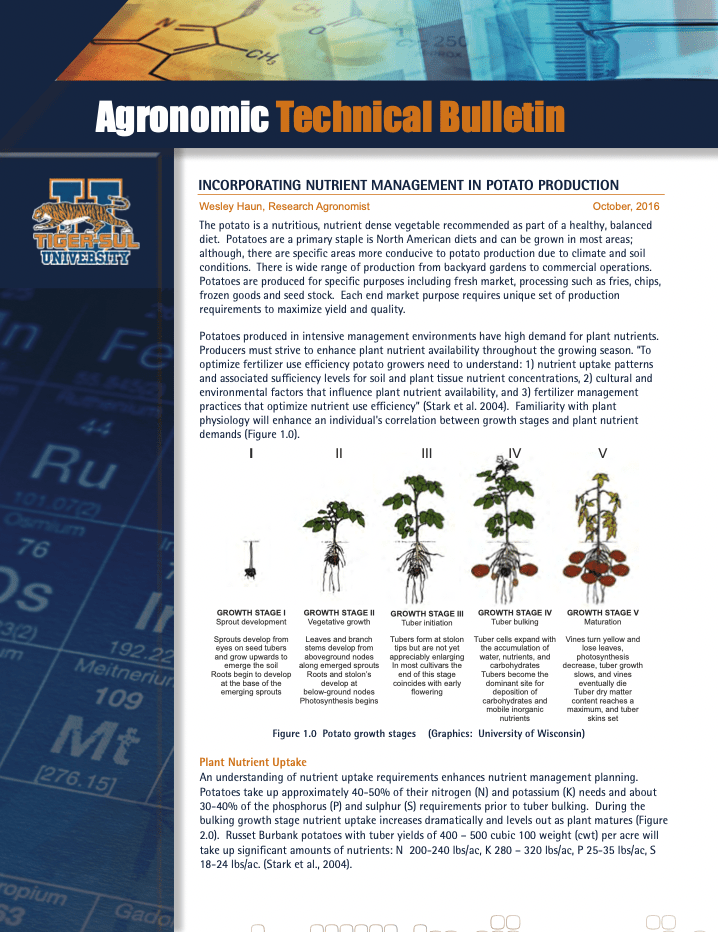
The potato is a nutritious, nutrient dense vegetable recommended as part of a healthy, balanced diet. Potatoes are a primary staple is North American diets and can be grown in most areas; although, there are specific areas more conducive to potato production due to climate and soil conditions. There is wide range of production from backyard gardens to commercial operations.
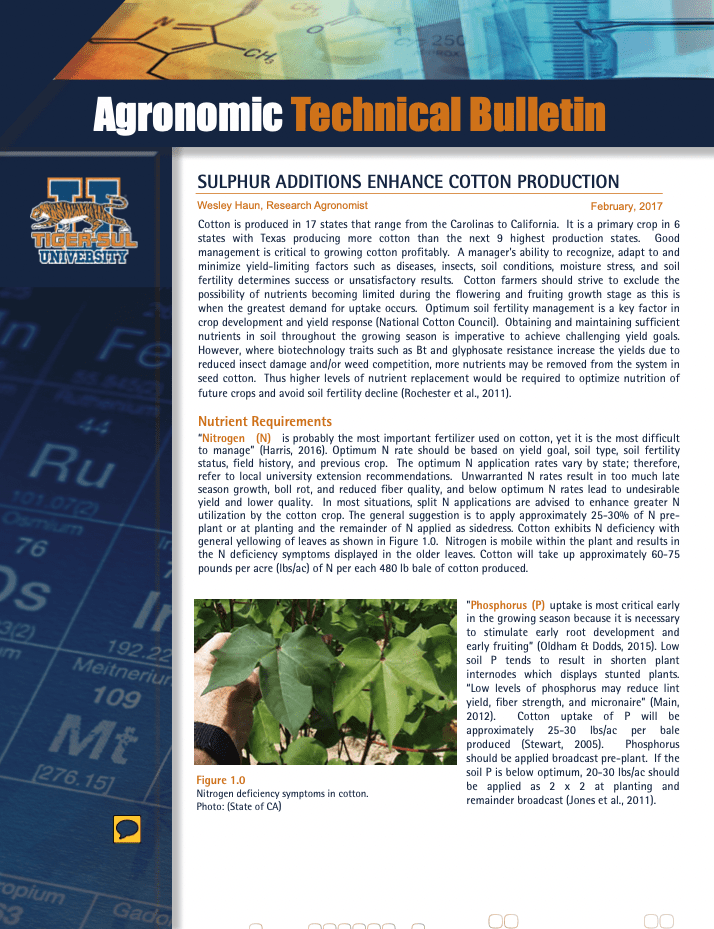
Cotton is produced in 17 states that range from the Carolinas to California. It is a primary crop in 6 states with Texas producing more cotton than the next 9 highest production states. Good management is critical to growing cotton profitably. A manager’s ability to recognize, adapt to and minimize yield-limiting factors such as diseases, insects, soil conditions, moisture stress, and soil fertility determines success or unsatisfactory results. Cotton farmers should strive to exclude the possibility of nutrients becoming limited during the flowering and fruiting growth stage as this is when the greatest demand for uptake occurs.
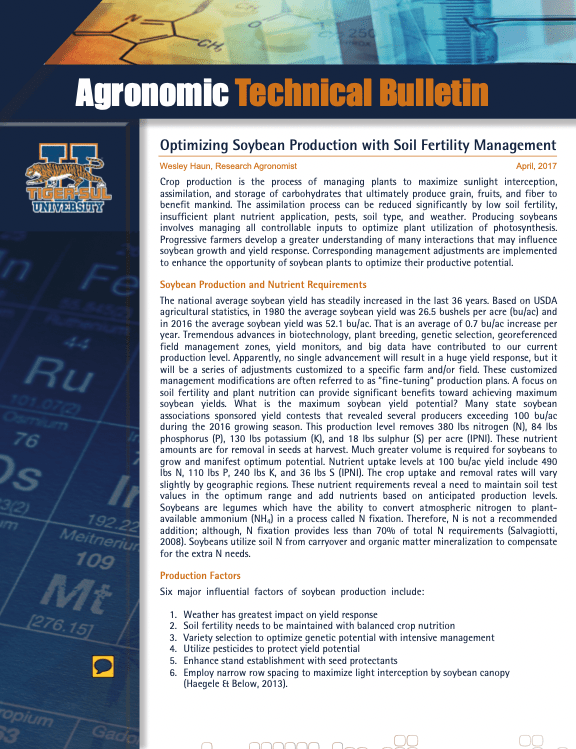
Crop production is the process of managing plants to maximize sunlight interception, assimilation, and storage of carbohydrates that ultimately produce grain, fruits, and fiber to benefit mankind. The assimilation process can be reduced significantly by low soil fertility, insufficient plant nutrient application, pests, soil type, and weather.
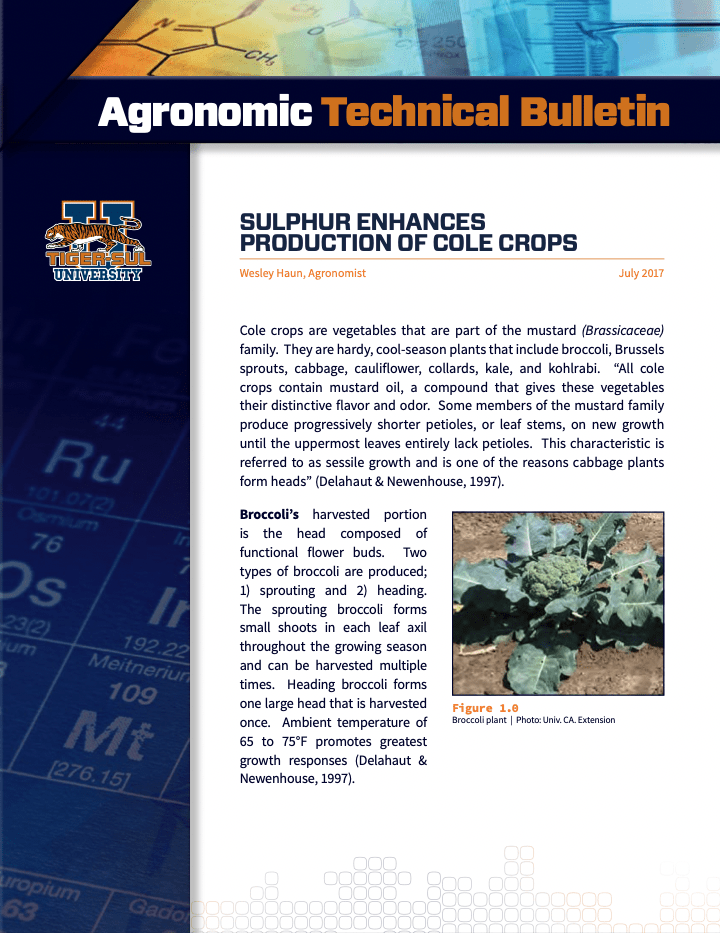
Cole crops are vegetables that are part of the mustard (Brassicaceae) family. They are hardy, cool-season plants that include broccoli, Brussels sprouts, cabbage, cauliflower, collards, kale, and kohlrabi.
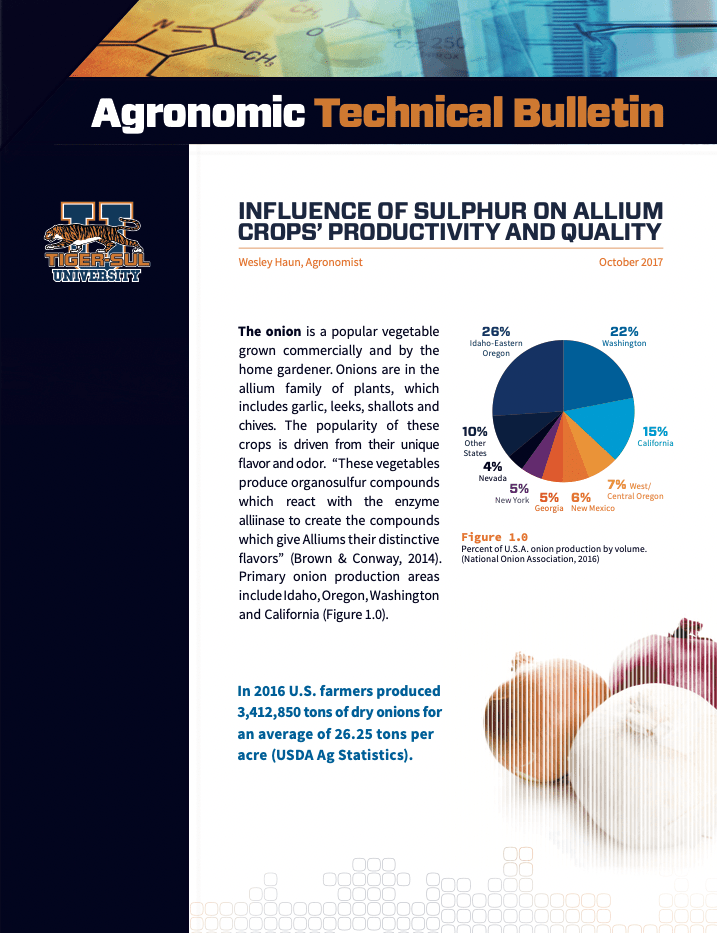
The onion is a popular vegetable grown commercially and by the home gardener. Onions are in the allium family of plants, which includes garlic, leeks, shallots and chives. The popularity of these crops is driven from their unique flavor and odor. “These vegetables produce organosulfur compounds which react with the enzyme alliinase to create the compounds which give Alliums their distinctive flavors” (Brown & Conway, 2014).
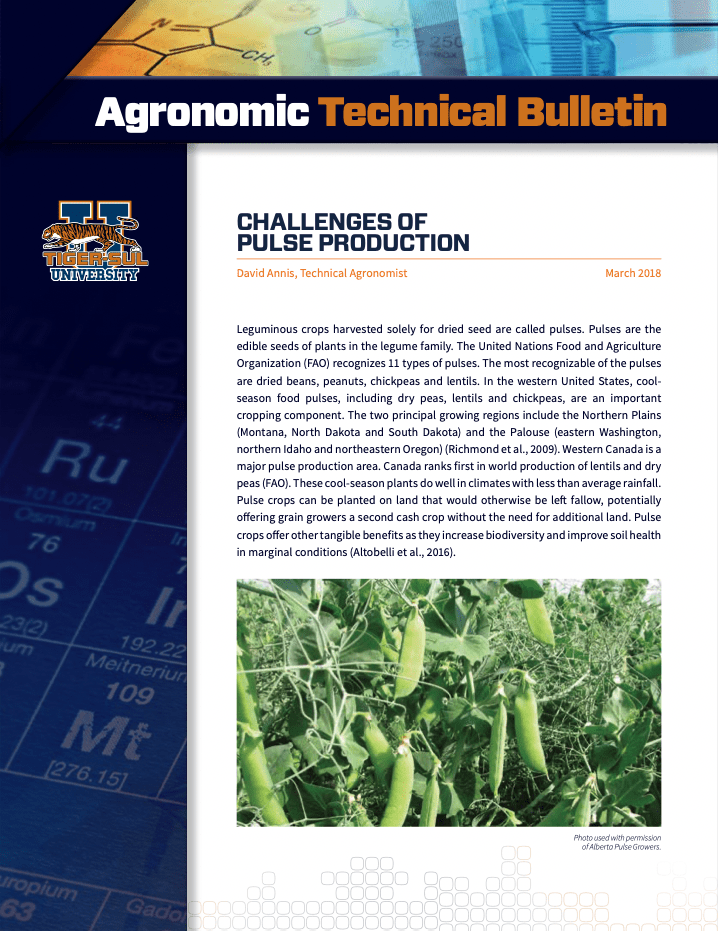
Leguminous crops harvested solely for dried seed are called pulses. Pulses are the edible seeds of plants in the legume family. The United Nations Food and Agriculture Organization (FAO) recognizes 11 types of pulses. The most recognizable of the pulses are dried beans, peanuts, chickpeas and lentils. In the western United States, coolseason food pulses, including dry peas, lentils and chickpeas, are an important cropping component. The two principal growing regions include the Northern Plains (Montana, North Dakota and South Dakota) and the Palouse (eastern Washington, northern Idaho and northeastern Oregon) (Richmond et al., 2009). Western Canada is a major pulse production area. Canada ranks first in world production of lentils and dry peas (FAO).
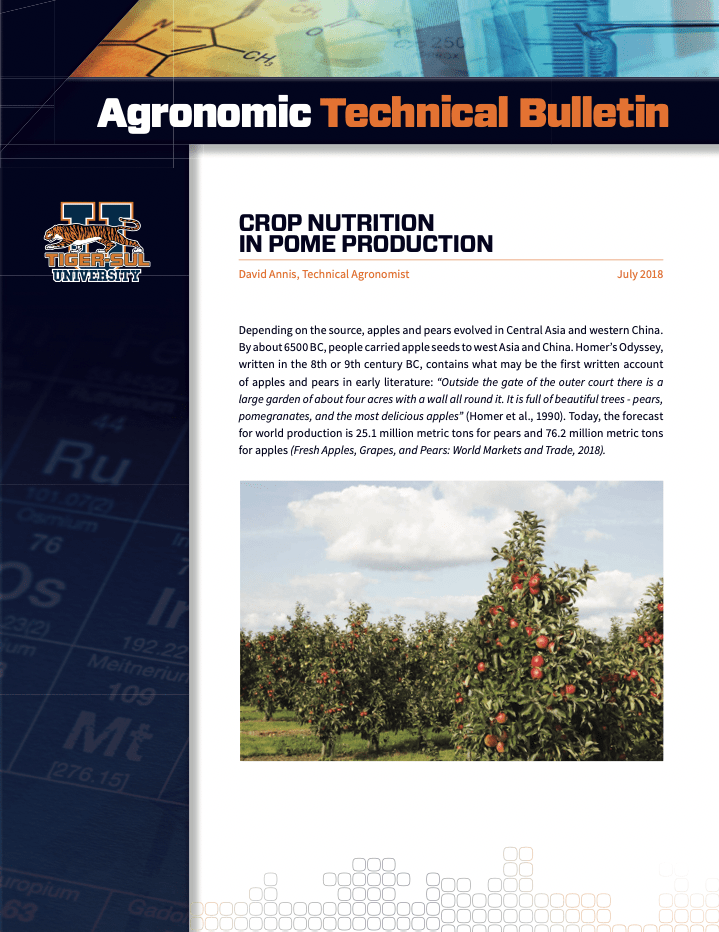
Depending on the source, apples and pears evolved in Central Asia and western China. By about 6500 BC, people carried apple seeds to west Asia and China. Homer’s Odyssey, written in the 8th or 9th century BC, contains what may be the fi rst written account of apples and pears in early literature: “Outside the gate of the outer court there is a large garden of about four acres with a wall all round it. It is full of beautiful trees – pears, pomegranates, and the most delicious apples” (Homer et al., 1990).
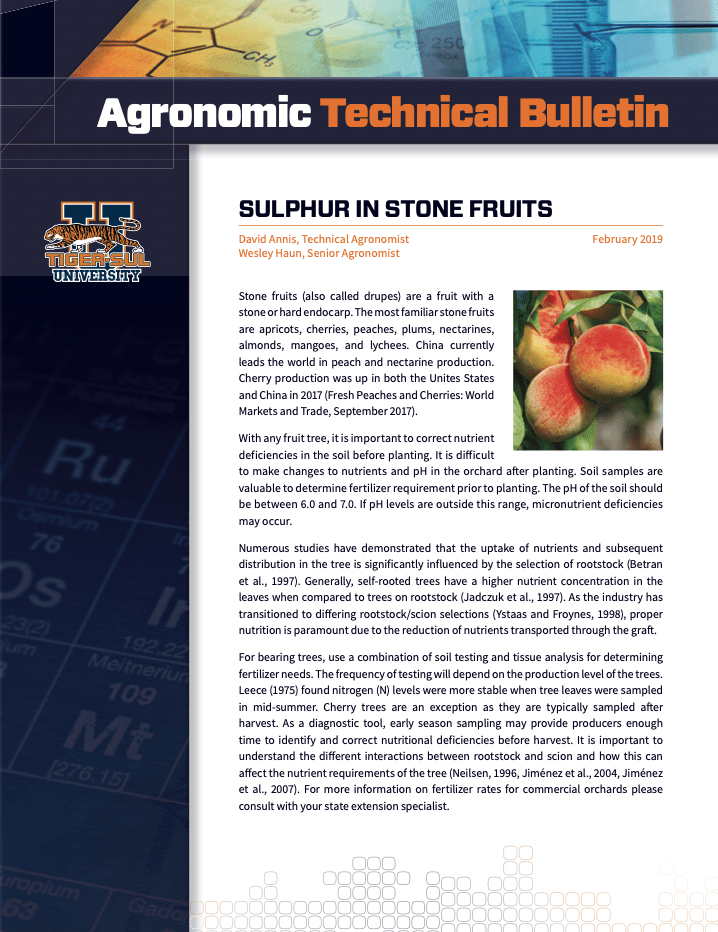
Stone fruits (also called drupes) are a fruit with a stone or hard endocarp. The most familiar stone fruits are apricots, cherries, peaches, plums, nectarines, almonds, mangoes, and lychees. China currently leads the world in peach and nectarine production. Cherry production was up in both the Unites States and China in 2017 (Fresh Peaches and Cherries: World Markets and Trade, September 2017).
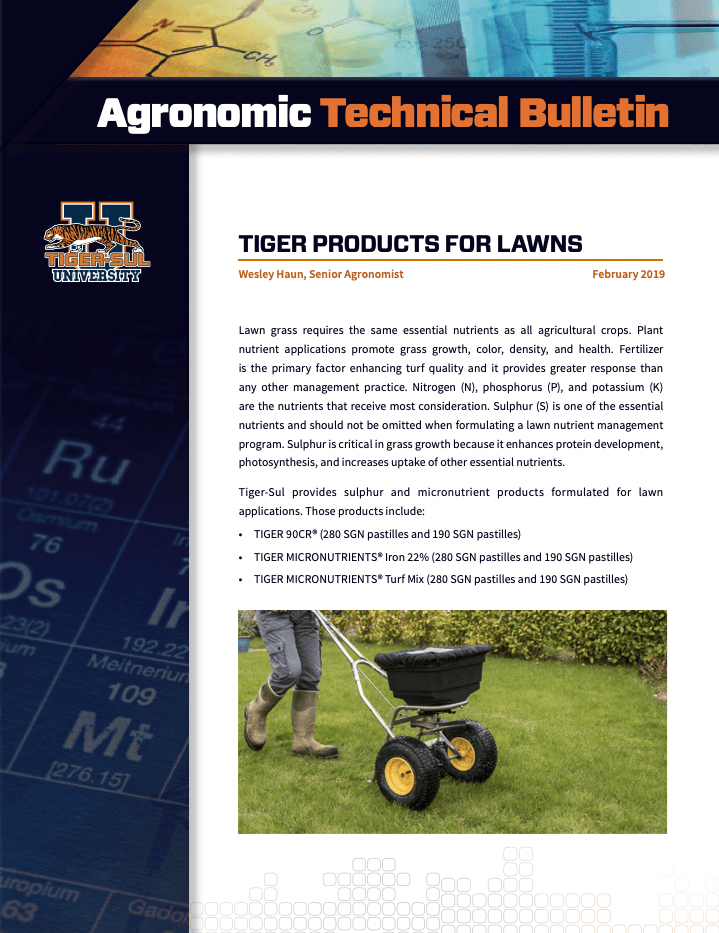
Lawn grass requires the same essential nutrients as all agricultural crops. Plant nutrient applications promote grass growth, color, density, and health. Fertilizer is the primary factor enhancing turf quality and it provides greater response than any other management practice. Nitrogen (N), phosphorus (P), and potassium (K) are the nutrients that receive most consideration. Sulphur (S) is one of the essential nutrients and should not be omitted when formulating a lawn nutrient management program.
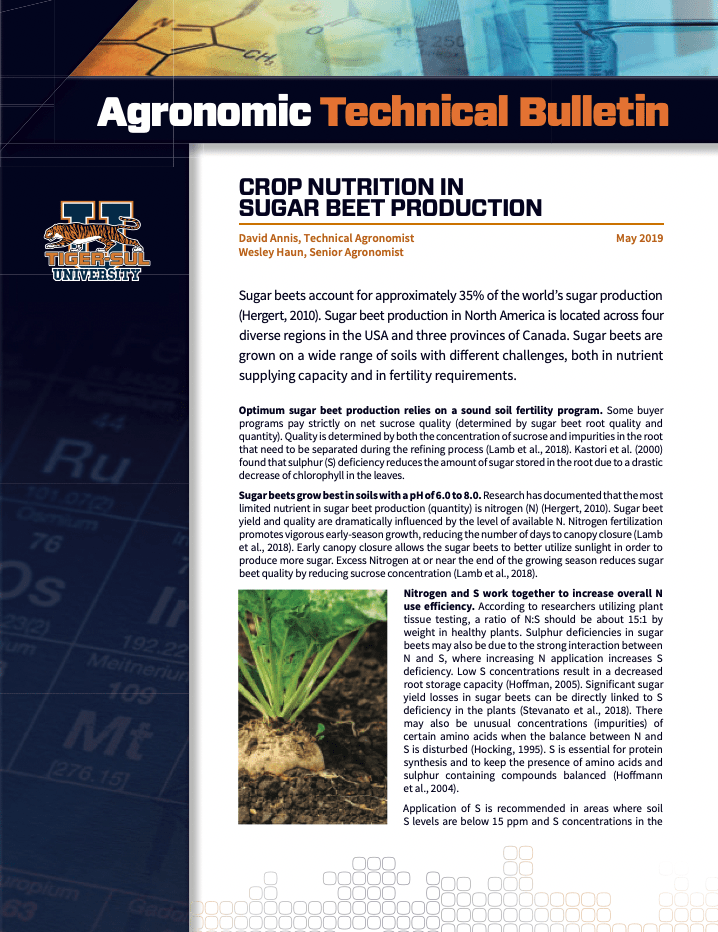
Sugar beets account for approximately 35% of the world’s sugar production (Hergert, 2010). Sugar beet production in North America is located across four diverse regions in the USA and three provinces of Canada. Sugar beets are grown on a wide range of soils with different challenges, both in nutrient supplying capacity and in fertility requirements.
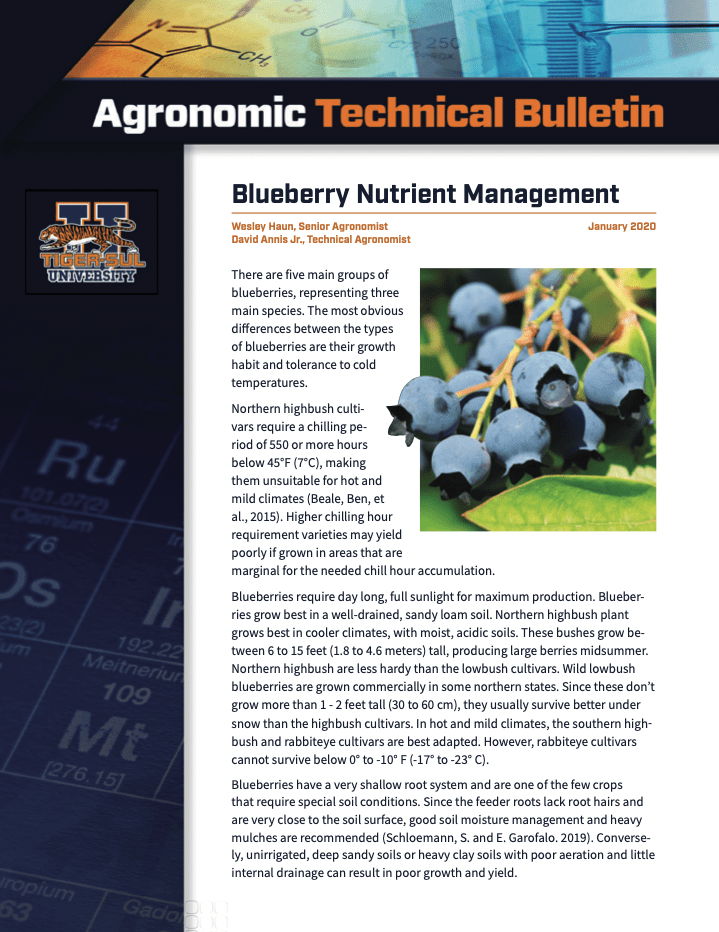
Blueberry fertility management requires an understanding of nutrient mobility. Nutrients requirements are affected by plant age, canopy size, yield, time of year. Fertilizer applications depends on both the method of application and amount of plant nutrients needed. Continued testing for both soil pH and soil nutrient levels are needed and should be corrected according to plant tissue and soil sample analyses.
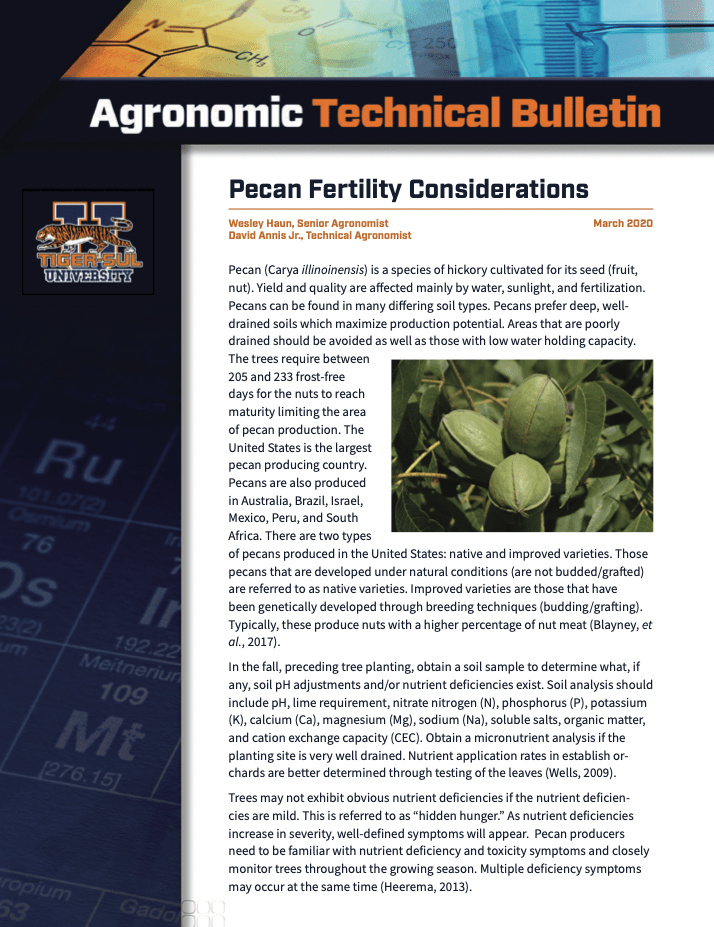
Pecan (Carya illinoinensis) is a species of hickory cultivated for its seed (fruit, nut). Yield and quality are affected mainly by water, sunlight, and fertilization. Pecans can be found in many differing soil types. Pecans prefer deep, well-drained soils which maximize production potential. Areas that are poorly drained should be avoided as well as those with low water holding capacity.
